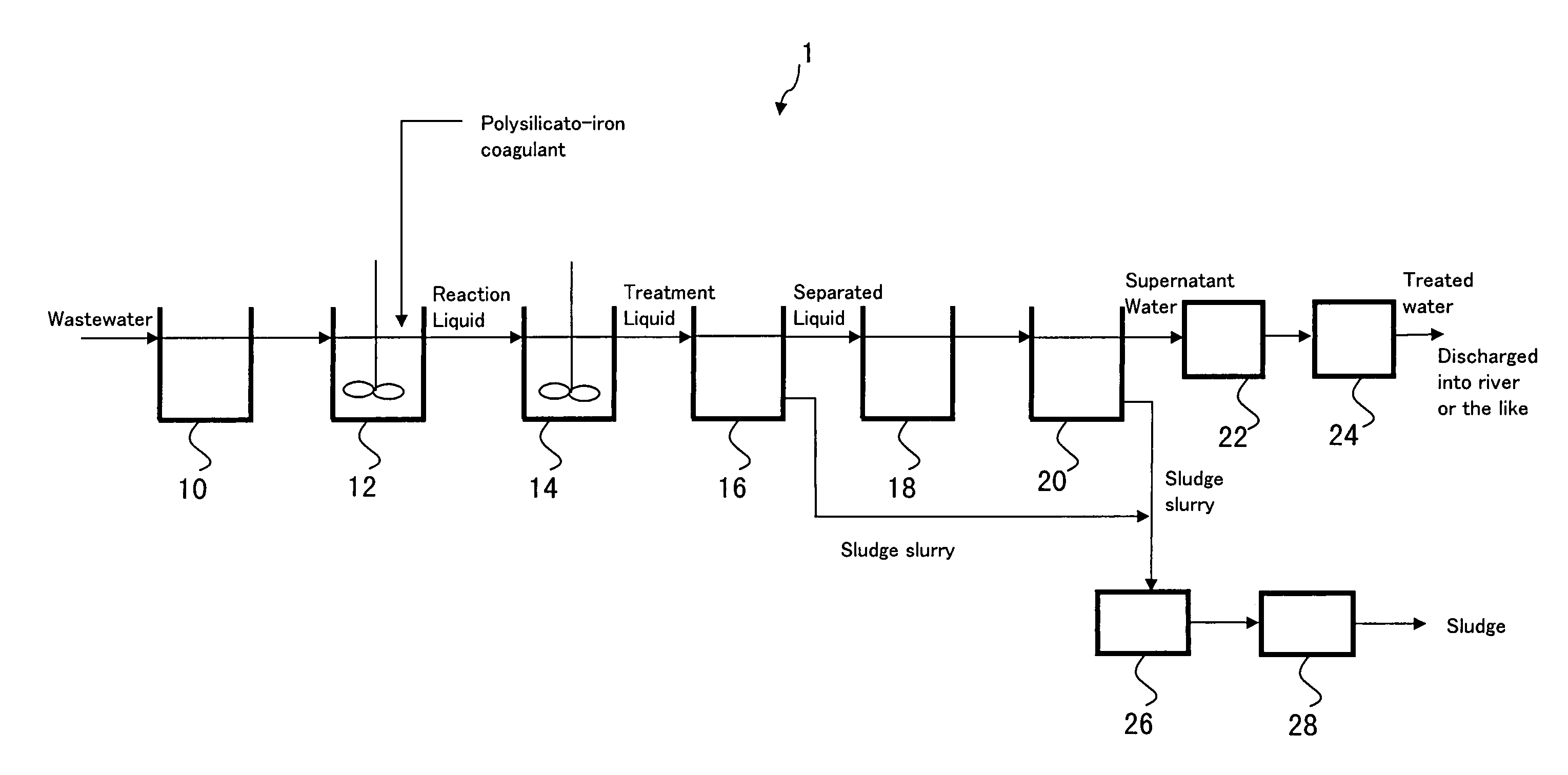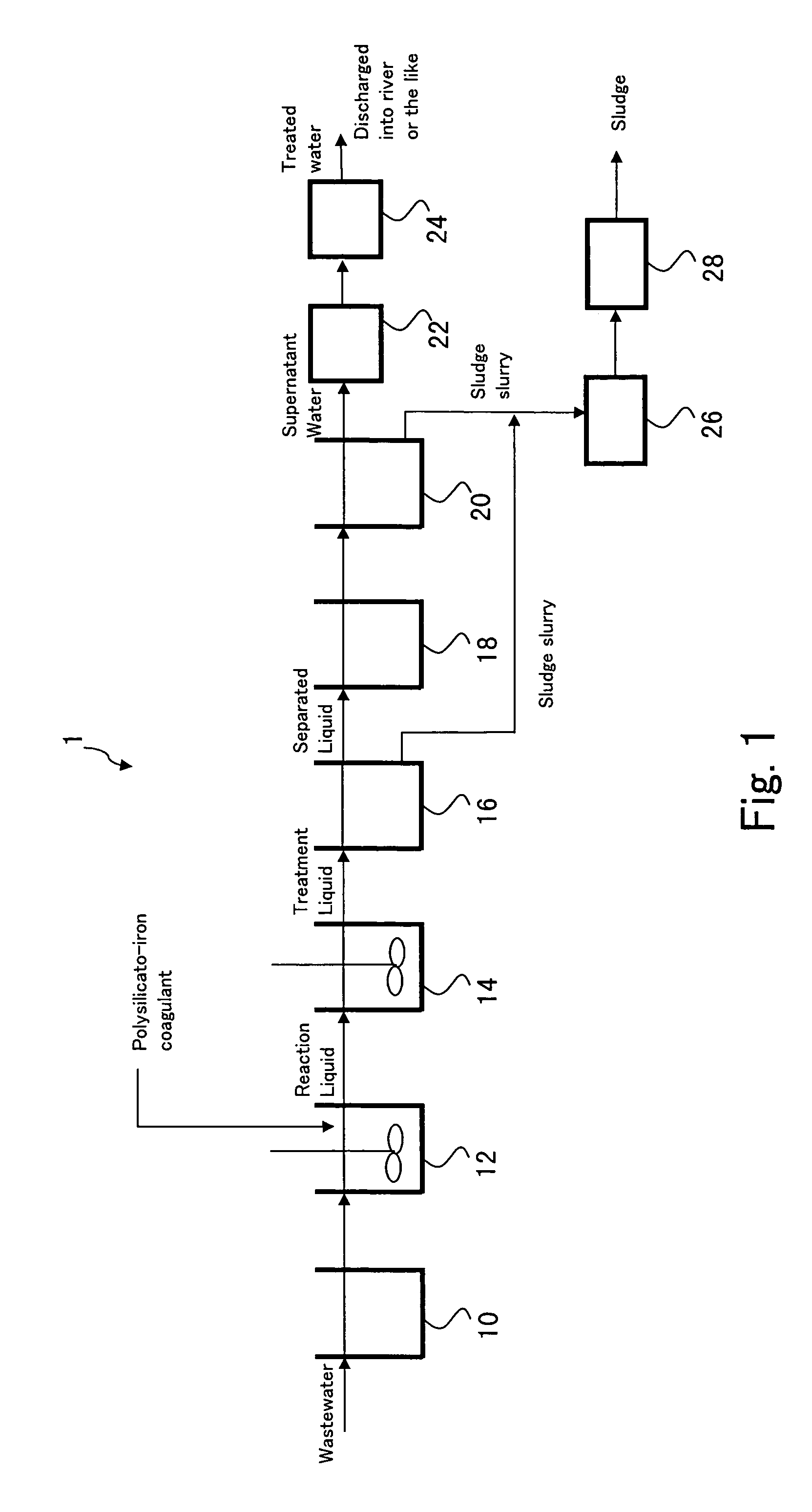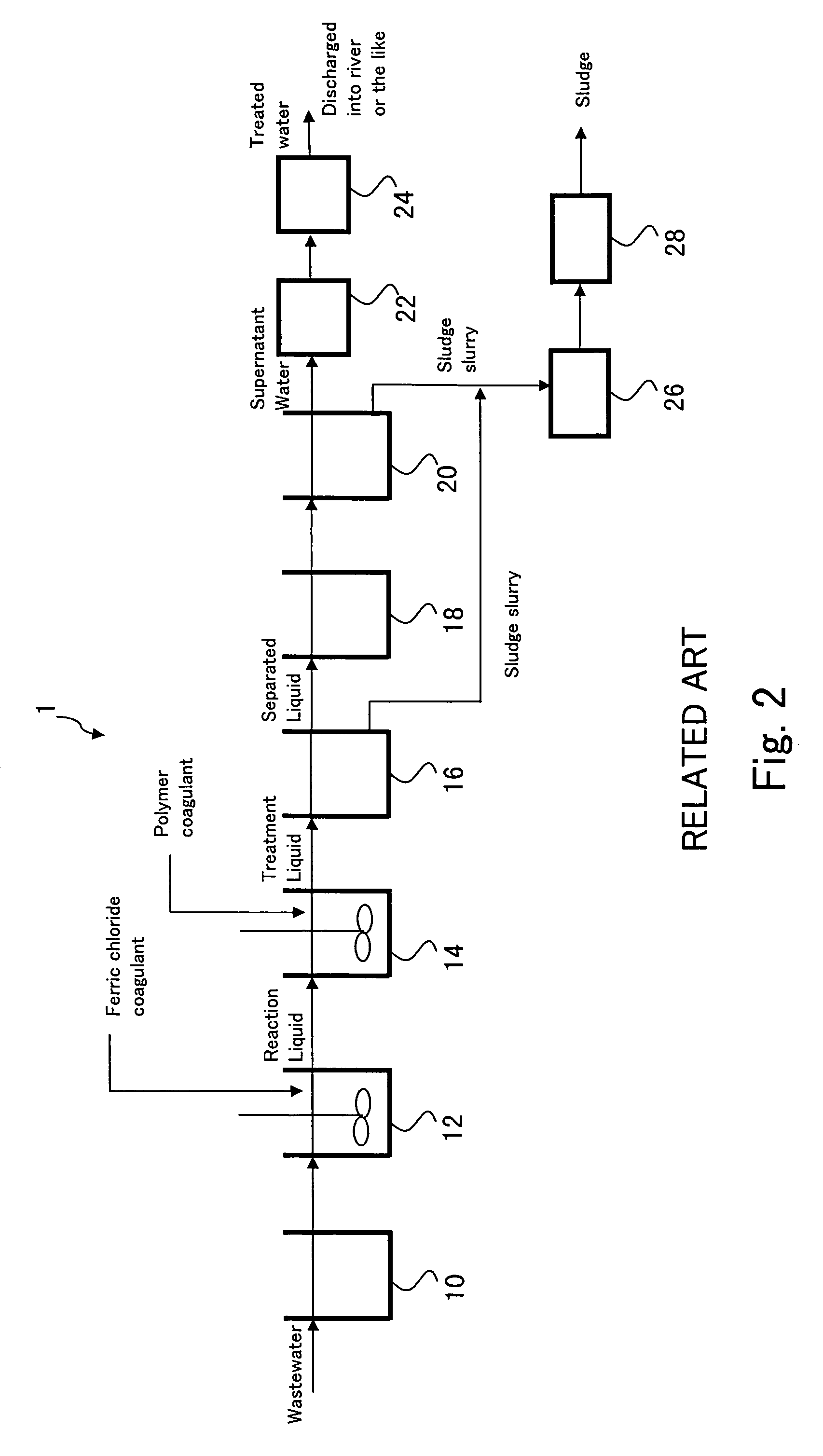Wastewater treatment process
a technology of wastewater treatment and wastewater, which is applied in the direction of separation process, evaporation, and treatment water nature, etc., can solve the problems of poor settling characteristics of the flock within the settling tank, wastewater cannot be discharged into rivers or ground water in an untreated state, and wastewater cannot be discharged into the untreated state, etc., to achieve the effect of reducing the quantity of sludge generated, efficient operation and reducing the quantity of coagulan
- Summary
- Abstract
- Description
- Claims
- Application Information
AI Technical Summary
Benefits of technology
Problems solved by technology
Method used
Image
Examples
example 1
[Treatment of the Wastewater A]
[0092]The wastewater A with a solid fraction concentration of 0.01% by weight discharged from the aforementioned toner production process was treated using the wastewater treatment apparatus shown in FIG. 1. In this example, treatment using a coagulation-sedimentation method is described, but the present invention is not restricted to this method, and a pressure flotation separation method, or a combination of the two methods could also be used. The wastewater A was first collected in the untreated water tank 10, and was then pumped into the reaction tank 12, where the pH of the wastewater was adjusted to a value from 5 to 7 using an acid (hydrochloric acid), 50 mg / L of a polysilicato-iron coagulant (Fe / Si molar ratio=1.0) was added, and a coagulation reaction was conducted under conditions including a stirring speed of 500 rpm and a residence time of 10 minutes. The resulting reaction liquid was then pumped into the coagulation tank 14 (18 m3), and fl...
example 2
[Treatment of the Wastewater B]
[0094]The wastewater B with a solid fraction concentration of 5% by weight discharged from the aforementioned toner production process was treated using the wastewater treatment apparatus shown in FIG. 1. The wastewater B was first collected in the untreated water tank 10, and was then pumped into the reaction tank 12, where the pH of the wastewater was adjusted to a value from 5 to 7 using an acid (hydrochloric acid), 100 mg / L of a polysilicato-iron coagulant (Fe / Si molar ratio=1.0) was added, and a coagulation reaction was conducted under conditions including a stirring speed of 500 rpm and a residence time of 10 minutes. The resulting reaction liquid was then pumped into the coagulation tank 14, and flock formation was conducted using a stirring speed of 300 rpm and a residence time of 10 minutes. Favorable flock formation was achieved. Subsequently, the treatment liquid containing the flock formed within the coagulation tank 14 was pumped into the ...
PUM
| Property | Measurement | Unit |
|---|---|---|
| concentration | aaaaa | aaaaa |
| temperature | aaaaa | aaaaa |
| molar ratio | aaaaa | aaaaa |
Abstract
Description
Claims
Application Information
 Login to View More
Login to View More - R&D
- Intellectual Property
- Life Sciences
- Materials
- Tech Scout
- Unparalleled Data Quality
- Higher Quality Content
- 60% Fewer Hallucinations
Browse by: Latest US Patents, China's latest patents, Technical Efficacy Thesaurus, Application Domain, Technology Topic, Popular Technical Reports.
© 2025 PatSnap. All rights reserved.Legal|Privacy policy|Modern Slavery Act Transparency Statement|Sitemap|About US| Contact US: help@patsnap.com



